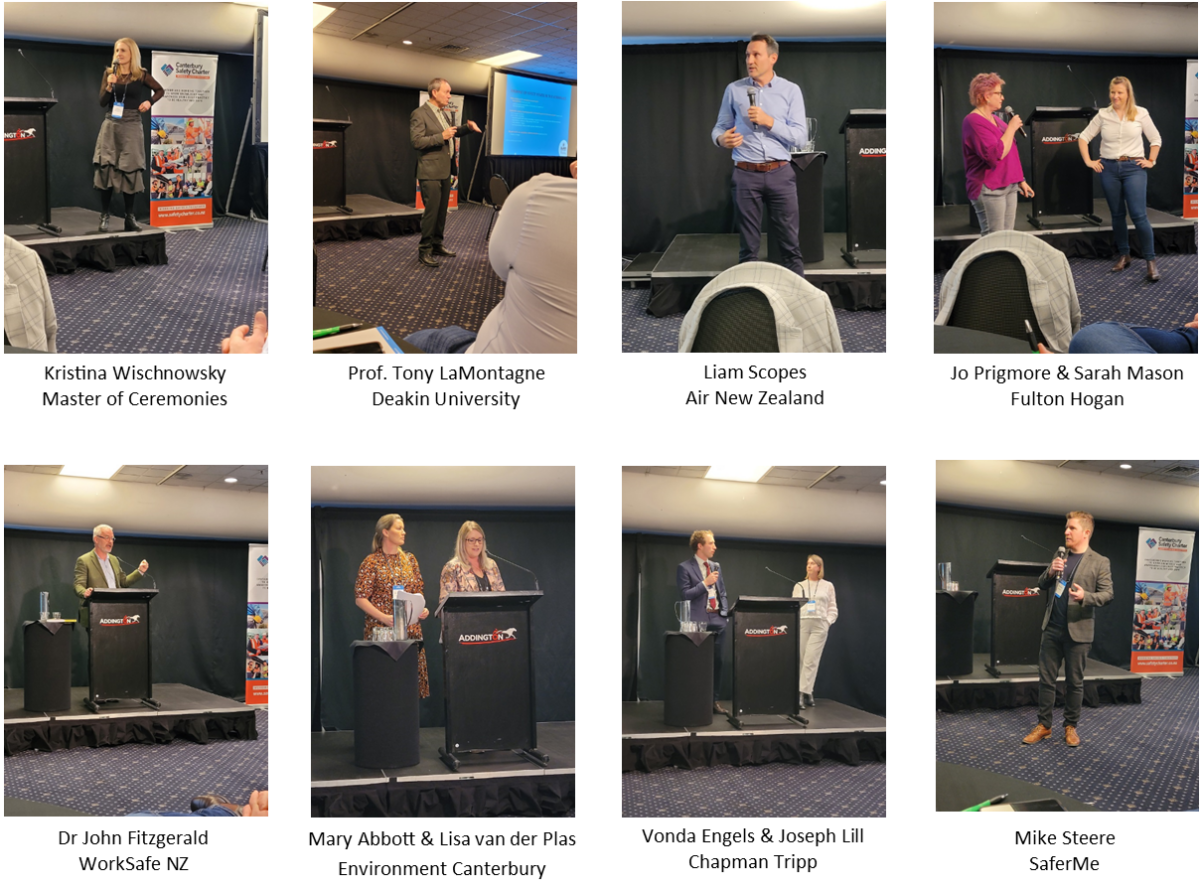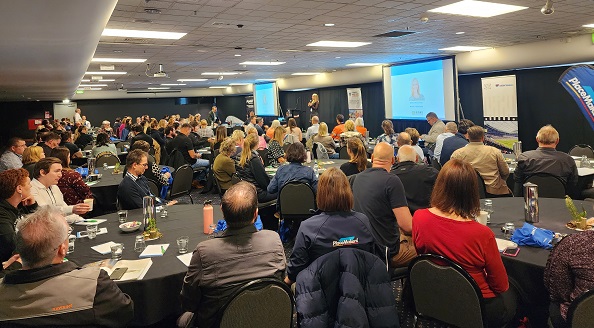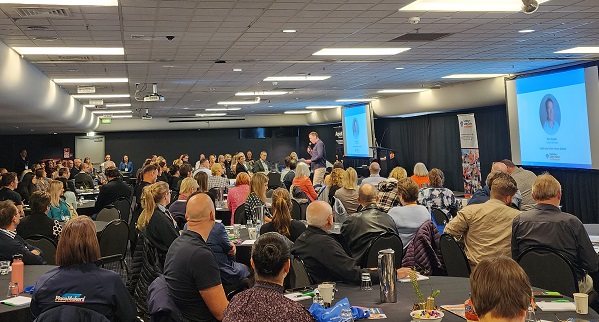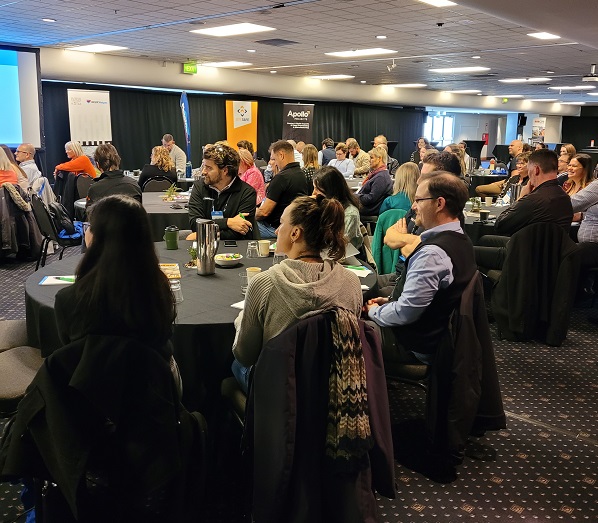It’s a wrap

It’s a wrap
mentally safe work conference
Wow, what a conference!
The Safety Charter’s Mentally Safe Work Conference was a fantastic mix of academic research, regulator perspective, interesting and innovative case studies, and legal and technological responses to the challenges in this area..
Master of Ceremonies, Kristina Wischnowsky provided great insights and kept the pace flowing.
The conference was opened by Associate Minister of Workplace Relations Priyanka Radhakrishnan who congratulated the Safety Charter on its 10-year anniversary, spoke of the passing of the HSR and Committees Act and how this would improve worker engagement and participation.
Safety Charter General Manager, Paul Duggan reminded us that health and safety is essentially a human activity, and if we accept this premise then we must also accept that humans will always be influenced by their emotional state. His call to the delegates was to challenge both their perceptions of mentally healthy work and inspire the belief that they could positively influence mentally healthy outcomes.
The first keynote address was delivered by Professor Tony LaMontagne, who introduced us to an integrated approach to improving workplace mental health and wellbeing. This focusses on preventing harm, promoting the positive, and responding to problems regardless of the cause. He also stressed the importance of defining what to do, not how to do it, as this depends on individual workers and the context.
Liam Scopes from Air New Zealand; Jo Prigmore and Sarah Mason from Fulton Hogan, then took us through their award winning mentally safe work programs. Both organisation’s use a me, we, us approach, which distinguishes individual tools, a culture of support, and health-in-design processes to improve ways of working. The concept of empowering workers to be “match-fit” was also a valuable concept.
Dr John Fitzgerald, the Lead of WorkSafe’s Mentally Healthy Work Unit, spoke about the importance of wellbeing, leadership and culture. He presented us with some key definitions around mentally healthly work and wellbeing, and the application of wise leadership in developing an operational culture.
In the afternoon session, Mary Abbott and Lisa van der Plas spoke about cultural wellbeing and why it is important. They introduced the delegates to the Te Whare Tapa Wha model and the five pillars of wellbeing, physical, spiritual, mental and emotional, family and social, and land and roots. They demonstrated the importance of voluntary participation in the programs, and ensuring the initiatives are linked to all the pillars.
Vonda Engels and Joseph Lill from Chapman Tripp then took us through the legal aspects of mentally safe work, including case law from New Zealand and Victoria. Mentally safe work can have both health and safety and employment law applications, so it is important to train and equip managers and leaders with the tools to proactively assess risks.
Former NZ Rugby League Captain Ritchie Barnett then spoke about the I Am Hope Foundation and the Gumboot Friday Campaign to improve mental health in New Zealand youth. He spoke passionately about the dire state of mental health in the youth community, and how the foundation was providing free counselling services nationwide.
The conference concluded with Mike Steere and Dr Steve Cantwell presenting the SaferMe App, which allows organisation’s to quantify psycho-social hazards in the workplace, enable a targeted approach, and understand the impact of any interventions.
The Conference was closed by the Safety Charter’s outgoing Board Chair Ian Campbell. He took us through his personal highlights from the conference and mixed these with his own experiences in major horizontal projects.
It was a very thought-provoking day, with a lot of insight and practical applications. The Mentally Safe Work Committee would like to thank all the sponsors and exhibitors for their support in bringing this conference to Christchurch.



